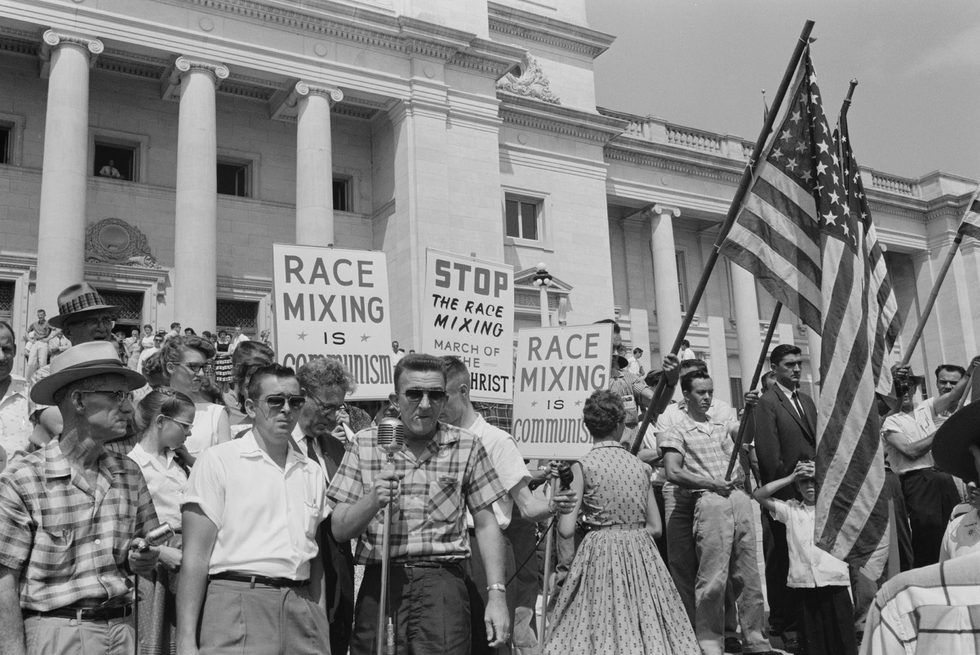Teaching Race: Integration
From the Series: Teaching Race
From the Series: Teaching Race

How do we teach race to our students and wider publics? This Correspondences session collects answers to this question from several domains of the discipline. As the Section Editor for the Teaching Tools section of the Society for Cultural Anthropology website, I am very glad to facilitate and participate in a collaboration with the Correspondences series. This collaboration is an affirmation of the ongoing pedagogical significance of anthropological critiques of race.
The diverse posts in this session share a common concern: how to teach race in America. The interactions between students and instructors that each author highlights occur within an already raced context, drawing on situated genealogies of race and racism. The differently raced positions of instructors and students are part of the class dynamic that each author discusses. Indulata Prasad’s analysis of the relations between race and caste highlights this crucial, but unmarked background. Teaching race in America may slide into teaching American racism, an unfortunate elision that occludes the mobility of race concepts across borders and the complex genealogies of imperialism and colonialism. Are we teaching race or teaching races and racisms, plural?
Prasad is from South India and teaches at the University of Texas at Austin; in class discussions on race in the Americas, her students often ask her about caste in India. Her students’ questions intuitively trouble the process of carving up systems of racial inequality along political boundaries. Prasad writes that “the terms race and caste are similar, as both stand for forms of social discrimination and prejudice based on descent.” She reminds us of the political stakes of linking race and caste across national borders, where caste is formally treated as an internal matter of Indian politics and Indian sociology. Against this boundary-making, Prasad articulates the historical and ongoing links between social justice movements for racial equality in the United States and in India. She argues that caste, rather than being the proper subject of Indian sociology, ought to be taught as a racial system alongside other forms of racism elsewhere.
Discussing Indian caste in a class on race in the Americas is itself an act of resistance when social justice movements are often divided along political borders. Prasad’s students initiated this border-crossing dialogue when they asked her about the difference between caste in India and race in the Americas. Her position, as a South Indian and as an instructor, contributed to this productive classroom dynamic.
My point is that our raced roles in the classroom, as instructors and as students, need to be considered when teaching races and racisms. Angela Jenks, an anthropologist of color, reminds us that academic anthropology remains a mostly white public space. She analyzes how race dynamics in the classroom produce different emotions and feelings for differently raced students and instructors. Teaching race and teaching racism are different things: an instructor may introduce students to critiques of the biology of race without necessarily teaching them about currently existing systems of racial inequality. Jenks comments that many instructors choose to focus on debunking scientific theories of race rather than critiquing contemporary systems of racism. Teaching racism, for many instructors, means teaching anger and pain. Students learning about racism may experience intense emotions, particularly if they come from marginalized groups. For Jenks, teaching racism well compels her ongoing attention and responsiveness to these “affective dimensions of pedagogy.”
Jenks argues that a “critique of racial ideology and its roles in systems of inequality [is] one of the most important perspectives we offer” to undergraduate students learning about anthropology. At the same time, Jenks’s students often enter the classroom with pre-existing ideas about human equality and the necessity of disavowing race. This complex of pre-existing ideas includes the assumption that racism was a problem in America’s past, which has been overcome through civil rights movements. Students’ present experiences of discrimination appear disconnected from these received histories of prejudice, eugenics, and slavery. For Jenks, “confronting racism” in the classroom may mean asserting the existence of race and racism against prevailing notions of an “ostensibly ’postracial’ America.”
Jonathan Marks joins our session as a biological anthropologist with a special focus on the critique of scientific racism. Marks distinguishes the “taxonomic fallacy of race,” as a set of false facts about human genetic variation, from the “political act of racism,” which is very much real. Distinguishing the biological fallacy of race from the cultural reality of racism can be challenging in the classroom, particularly for a biological anthropologist. Biological anthropologists continue to engage race as a meaningful, if troublesome and challenging, concept. Teaching race compels Marks to introduce a fraught moral discourse into class discussions, notwithstanding some students’ beliefs that race is rooted in scientifically proven reality and therefore beyond moral discussion.
These class discussions are an opportunity to introduce science as both a product and a subject of anthropological study across the four fields of our discipline. Race is a founding object of anthropological analysis and is inherently transdisciplinary across its fields. Race sciences are a part of our patrimony, whether we will it or not. Simultaneously, Marks reminds us, anthropologists have developed and continue to develop critiques of race and scientific racisms. Cultural anthropologists contribute to the work of dismantling racisms by studying the sociocultural contexts that produce different races and racisms. In this kind of research, the biological reality of race becomes irrelevant. Race is socially and culturally real.
Many undergraduate students encounter scholarly theories of race for the first (and perhaps the only) time in anthropology classes. This places a necessary burden on instructors to address the moral complexity of races and racisms. Students enter our classes already raced; our racial positions and experiences influence how we teach our classes. The racial complexity already present in our classes (and present, also, in the field of anthropology) can enrich how and what we teach. What race dynamics do you bring into your classroom?